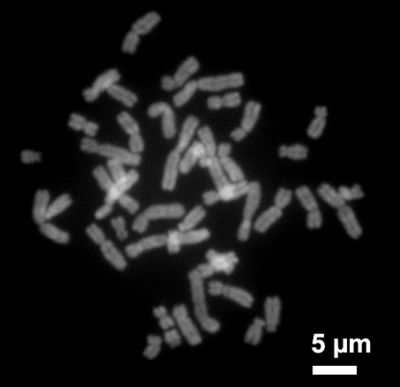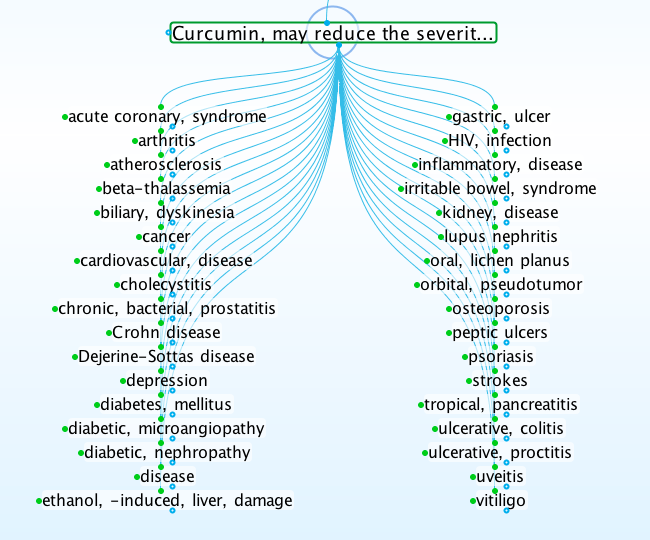Posted by Horton Tatarian, research biochemist, on 11th Oct 2016
Epigenetics Overrules Genetics

Artists conception of the DNA molecule
Genetics Is The Framework For Health
DNA (deoxyribonucleic acid) carries the genetic information that guides the development of body structures, functions, and differences between people and every other organism. Therefore, the sequence of molecules within a person’s DNA, the genetic code, is a primary factor in health and disease.
Advanced research in genetics continues to decipher the meaning of the genetic code. Through DNA sequencing, scientists can predict some aspects of a person’s appearance and future health. Theoretically, further research will eventually enable the following:
- Cures for genetically transmitted diseases
- Corrections for suboptimal coding that increases susceptibility to disease
- Creation of babies with desirable traits upon the request of parents or governments
Altering the molecular sequences that compose DNA raises profound ethical questions. In any case, the procedure will carry significant risks due to the inevitability of human errors in skill or judgment.
Epigenetics Controls The Genetic Code

Human chromosomes during metaphase. (Wikipedia)
A New Scientific Field
Epigenetics is a new scientific field, which is one reason why few people hear of it. However, for the vast majority of people, a person's epigenetics surpasses concerns about faulty genetics since epigenetics is about gene control.
Epigenetics is the study of factors that control gene function through heritable changes in histones and DNA apart from alterations in the genetic code (i.e. the DNA sequence). A less detailed definition follows:
Epigenetics: the study of heritable changes in gene function that do not involve changes in DNA sequence Reference
A closely related concept, epigenomics, examines the totality of epigenetic processes and changes in gene function. The National Institutes of Health offers the following definition:
Epigenomics: The systematic study of the global gene expression changes due to EPIGENETIC PROCESSES and not due to DNA base sequence changes. Reference
Epigenetic Factors
While a person’s DNA determines genetic potential, epigenetic factors largely determine how genes function. Furthermore, epigenetic changes to histones and the DNA are heritable. Parents transfer their epigenetic patterns of gene control to their offspring who may, in turn, modify them.
In the past, many scientists viewed most DNA as "junk" since they could not explain its purpose. Today, scientists recognize most "junk" DNA are actually epigenetic elements involved in regulating gene function. ("God makes no junk.")
Only about 2% of our genome is composed of protein-coding genes, while the remaining 98%, once considered "junk" DNA, codes for regulatory/epigenetic elements that control how genes are expressed in different tissues and across time from conception to death. Reference
Epigenetic factors modify the epigenetic elements of DNA, thereby controlling many essential organism functions. Beneficial epigenetic factors promote health while disruptive ones lead to serious adverse health effects.
Hundreds of reports associate adverse epigenetic factors with autoimmune disease, intestinal disorders, cardiovascular disease, diabetes, metabolic syndrome, obesity, cancer, brain dysfunction, and mental illness. For example:
Therefore, the molecular mechanisms involved in the epigenetic programming require a new and general pathogenic paradigm, the Developmental Origins of Health and Disease theory, to explain the current epidemiological transition, that is, the worldwide increase of chronic, degenerative, and inflammatory diseases such as obesity, diabetes, cardiovascular diseases, neurodegenerative diseases, and cancer. Reference
There is evidence that epigenetic changes may be inherited to affect subsequent generations. We speculate on how epigenetic processes may interact with genetic contributions to inform prevention and treatment strategies for those who are at risk for or have anxiety disorders. Reference
Epigenetic studies have offered in recent years valuable tools for the understanding of the worldwide spread of the pandemic of obesity. The involvement of epigenetic modifications-DNA methylation, histone tails, and miRNAs modifications in the development of obesity is more and more evident. Reference
Epigenetic Factors Change Chromosomes
Epigenetic Mechanisms
Epigenetic factors impact gene function primarily through three mechanisms:
- Histone Modification
- DNA Modification
- Non-coding RNA Stimulation
Epigenetic modifications, including DNA methylation, covalent histone modifications, and small noncoding RNAs, play a key role in regulating the gene expression. This regulatory mechanism is important in cellular differentiation and development. Reference
Numerous research articles provide the molecular details on epigenetic changes in gene function and how these relate to the chronic degenerative diseases. Again, these changes affect the expression of the genetic code without altering the code itself.
1. Histone Modification
Histones are the proteins in chromosomes that form the framework that supports the DNA double helix. Changes in histone configuration can open or close sections of DNA and change gene proximities, altering gene function.
2. DNA Modification
Biochemical modification of the DNA strand occurs through DNA methylation and other biochemical actions, including acetylation, and phosphorylation. DNA methylation turns genes off.
Modifications of DNA underlie many chronic degenerative diseases and can also affect emotions and behavior.
Here we present the current state-of-the-art techniques and results of these studies within the domain of emotions, and then speculate on how genomic and epigenetic mechanisms can modify and potentially alter our emotional (limbic) brain and affect our social interactions. Reference
3. Non-coding RNA Stimulation
Various families of non-coding RNA (ribonucleic acid) molecules regulate gene function. MicroRNA-29 is one such family, and the following statements should interest milk drinkers.
After milk consumption, bovine microRNA-29b, a member of the diabetogenic microRNA-29- family, reaches the systemic circulation and the cells of the milk consumer. Reference
Since the early 1950´s, refrigeration technology allowed widespread consumption of fresh pasteurized milk, which facilitates daily intake of bioactive bovine microRNAs. Persistent uptake of cow´s milk-derived microRNAs apparently transfers an overlooked epigenetic diabetogenic program that should not reach the human food chain. Reference
Epigenetic Inheritance
Epigenetic factors that modify histones or DNA are heritable. Furthermore, the third mechanism of epigenetic control of gene function, non-coding RNA stimulation, may indirectly lead to histone or DNA modification.
Scientific review articles attempt to analyze hundreds of reports on a particular topic. The one that follows discusses epigenetic effects in obesity and type 2 diabetes.
This review highlights the key functions of DNA methylation and histone modifications and elucidates the underlying mechanisms of in utero programming and epigenetic inheritance, which could account for the global increase in obesity and [type 2diabetes]. Reference
Factors Affecting Epigenetic Inheritance
Factors with heritable epigenetic effects fall into four categories:
- Diet
- Exercise
- Intestinal Bacteria
- Environmental Exposure
These factors tend to combine as inducers of the epidemics of chronic disease, including obesity.
Obesity and its related complications are more and more associated with environmental pollutants (obesogens), gut microbiota modifications and unbalanced food intake, which can induce, through epigenetic mechanisms, weight gain, and altered metabolic consequences. Reference
1. Diet
While anti-inflammatory diets promote healthy gene function, poor diets disrupt gene expression through nutritional deficiencies, excesses, and toxic chemicals. Modification of genetic material by Western and other poor diets is heritable (passed down to subsequent generations).
The majority of epigenetic changes are influenced by lifestyle and diets. In this regard, dietary phytochemicals as dietary supplements have emerged as a promising source that are able to reverse these epigenetic alterations, to actively regulate gene expression and molecular targets that are known to promote tumorigenesis, and also to prevent age-related diseases through epigenetic modifications. Reference
Impediments that could block translation of encouraging experimental studies include environmental forces that work toward dysbiosis, perhaps none more important than westernized dietary patterns. On the other hand, it is likely that specific dietary choices may amplify the value of future microbial-based therapeutics. Reference
Again, epigenetic changes are reversible. For example, turmeric (an ingredient of curry, an Indian spice) and its extract, curcumin (a popular dietary supplement), impart potent epigenetic benefits.
This review summarizes the current knowledge on the effect of curcumin in the treatment and/or prevention of inflammation, neurodegenerative diseases, and cancers by regulating histone deacetylases, histone acetyltransferases, and DNA methyltransferases. Reference
Research articles on the effects of curcumin on disease states link to the following topics under the heading, "Curcumin may reduce the severity of."

Life Sciences Database Screenshot, Curcumin may reduce the severity of, Lifesciences.care
2. Exercise
The epigenetic effects of physical exercise include changes in DNA methylation patterns that increase gene expression against disease susceptibility. The mechanism for these benefits were unknown until recently.
Researchers have searched for molecular mechanisms explaining the health benefits of regular exercise for decades and it is well established that exercise alters the gene expression pattern in multiple tissues. However, until recently it was unknown that regular exercise can modify the genome-wide DNA methylation pattern in humans. Reference
Interestingly, emerging evidence has been showing that exercise training can also promote epigenetic modifications, e.g. DNA methylation, histone modifications, and differential expression of specific non-coding RNAs like microRNA (miRNAs). Reference
3. Intestinal Bacteria
A Metabolically Active Biomass
Scientists have long recognized the roles of intestinal bacteria (gut microbiota) in human nutrition. Thousands of articles discuss this subject, but an excellent summary follows:
The gut microbiota represents a metabolically active biomass of up to 2 kg in adult humans. Microbiota-derived molecules significantly contribute to the host metabolism. Large amounts of bacterial metabolites are taken up by the host and are subsequently utilized by the human body. For instance, short chain fatty acids produced by the gut microbiota are a major energy source of humans.It is widely accepted that microbiota-derived metabolites are used as fuel for beta-oxidation (short chain fatty acids) and participate in many metabolic processes (vitamins, such as folic acid). Reference
The summary continues with new information on the epigenetic effects of intestinal bacteria:
Apart from these direct metabolic effects, it also becomes more and more evident that these metabolites can interact with the mammalian epigenetic machinery. By interacting with histones and DNA they may be able to manipulate the host's chromatin state and functionality and hence its physiology and health. Reference
Chromatin is the material that composes chromosomes, protein (primarily histones), DNA, and RNA. Beneficial bacteria in the intestinal tract are essential to healthy gene function and, consequently, healthy organ and tissue function throughout the body.
Pathogenic bacteria impair gene function and lead to disease as a consequence. For example, intestinal bacteria (gut microbiota) affect healthy liver function over time (hepatic circadian homeostasis), as reported here:
Using fecal transplant procedures we reveal that, in response to high-fat diet, the gut microbiota drives PPARγ-mediated activation of newly oscillatory transcriptional programs in the liver. Moreover, antibiotics treatment prevents PPARγ-driven transcription in the liver, underscoring the essential role of gut microbes in clock reprogramming and hepatic circadian homeostasis. Reference
Fecal Transplants
Many of the current findings on the effects of beneficial and harmful intestinal bacteria come from research on fecal transplantation, which involves the transfer of fecal matter from one animal (or person) to another.
One way to modify the human gut microbiome is by transplanting fecal matter, which contains an abundance of live microorganisms, from a healthy individual to a diseased one in the hopes of alleviating illness. Reference
Certain diseases are transferable from one experimental animal to another through fecal transplants. More importantly, the transplantation of fecal material from healthy individuals health can restore in persons with a health disorder.
The diseases under study include autoimmune disease, obesity, metabolic syndrome, diabetes, multiple sclerosis, and Parkinson's disease. For example:
Here we review recent evidence suggesting efficacy of fecal microbiota transplant (FMT) in animal models and humans for the treatment of obesity and its associated metabolic disorders. Reference
The FDA has not yet approved fecal transplantation for routine medical therapy. However, for health promotion, the use of probiotics and healthful diets to restore and maintain beneficial intestinal bacteria is a reasonable alternative to fecal transplantation.
4. Environmental Exposure
Exposure to various forms of radiation and toxic chemicals have negative, heritable, epigenetic effects. For example, studies demonstrate gene dysfunction from cigarette smoke, but the damage is partially reversible with smoking cessation. Other studies show activation of gene repair mechanisms through healthful diet and appropriate dietary supplementation.
Only recently, it has been observed that the environmental conditions and daily diet can affect transgenerational gene expression via "reversible" heritable epigenetic mechanisms. Reference
Epigenetics has been considered the missing link between nature and nurture. Reference
Conclusion
Misplaced Blame on Genetics
Publicity about genetic therapy research without information on epigenetics misleads people to blame faulty genes when they have a family history disease. The current epidemics of chronic illnesses result from epigenetic factors and processes, not faulty genetics.
Epigenetic factors and degeneration are sufficient to explain the epidemics of obesity, cancer, neurological disease, and other chronic degenerative disorders. These epidemics did not exist a few generations ago. Furthermore, genetic studies of families do not reveal significant impairments to the genetic code over the past several generations.
The Epigenetic Solution
Media attention to epigenetic research is vital since knowledge of this phenomena is essential for people willing to take the necessary actions to improve and protect their health. Defective gene expression and disease susceptibility due to epigenetic damage are reversible.
The solution to inherited predisposition to disease involves improved diet, regular exercise, the use of effective probiotics and other dietary supplements, and protection from toxic physical and mental exposures.
Few people are willing to move on calls to action for improved diet, exercise, supplementation, and protection without knowing why. Spreading this information through social media appears necessary to compensate for the silence of the major media outlets on this issue.
Further Reading
About Horton Tatarian

I’m a biochemist who examines scientific findings on health and disease. My degree in biochemistry is from U.C. Berkeley. UCLA School of Medicine granted an M.D. degree in 1974. Since then, independent research prepared me to advise clients on natural ways of self-care.

